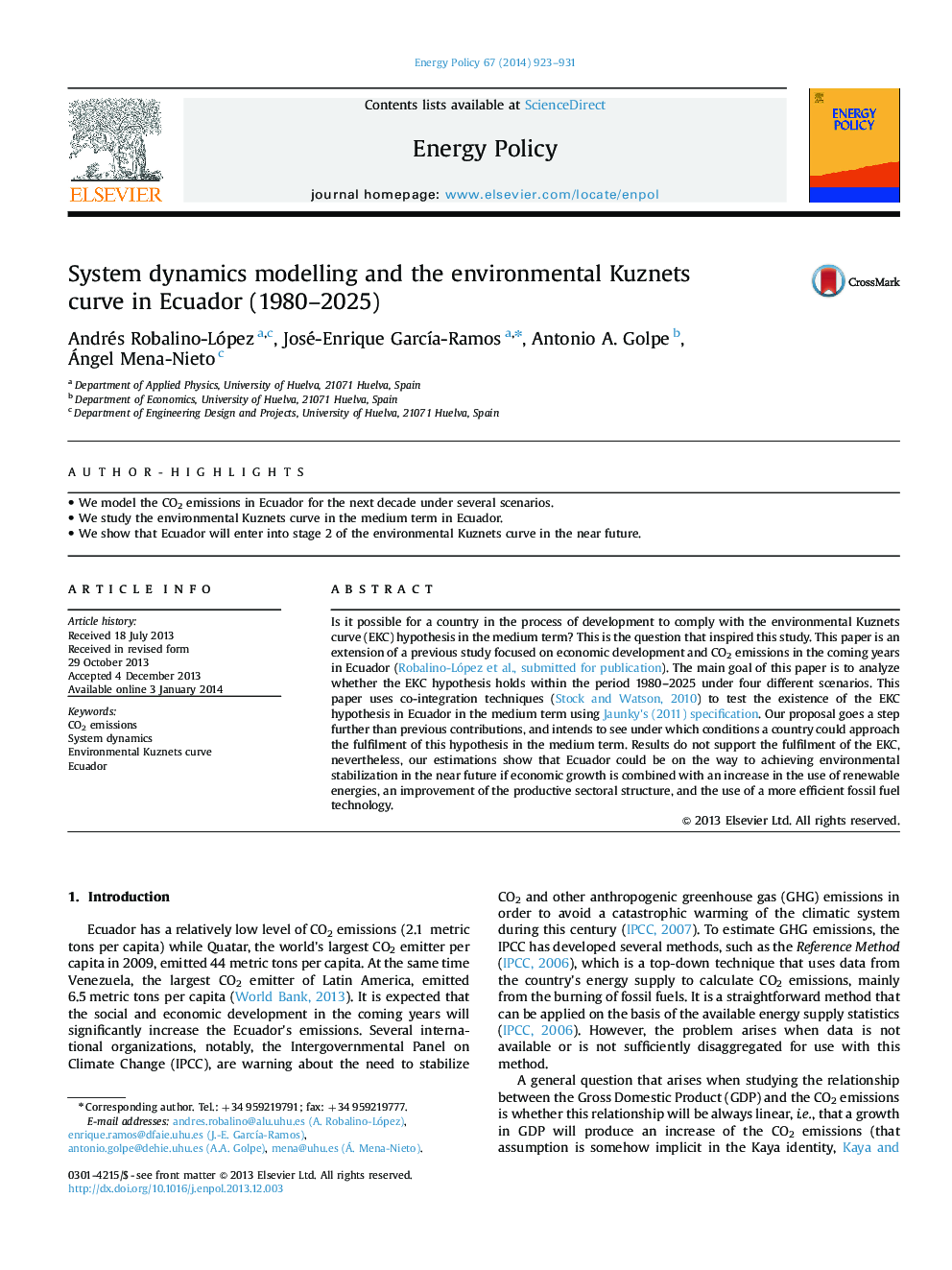| Article ID | Journal | Published Year | Pages | File Type |
|---|---|---|---|---|
| 7402800 | Energy Policy | 2014 | 9 Pages |
Abstract
Is it possible for a country in the process of development to comply with the environmental Kuznets curve (EKC) hypothesis in the medium term? This is the question that inspired this study. This paper is an extension of a previous study focused on economic development and CO2 emissions in the coming years in Ecuador (Robalino-López et al., submitted for publication). The main goal of this paper is to analyze whether the EKC hypothesis holds within the period 1980-2025 under four different scenarios. This paper uses co-integration techniques (Stock and Watson, 2010) to test the existence of the EKC hypothesis in Ecuador in the medium term using Jaunky's (2011) specification. Our proposal goes a step further than previous contributions, and intends to see under which conditions a country could approach the fulfilment of this hypothesis in the medium term. Results do not support the fulfilment of the EKC, nevertheless, our estimations show that Ecuador could be on the way to achieving environmental stabilization in the near future if economic growth is combined with an increase in the use of renewable energies, an improvement of the productive sectoral structure, and the use of a more efficient fossil fuel technology.
Related Topics
Physical Sciences and Engineering
Energy
Energy Engineering and Power Technology
Authors
Andrés Robalino-López, José-Enrique GarcÃa-Ramos, Antonio A. Golpe, Ángel Mena-Nieto,
